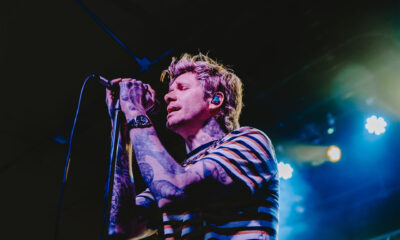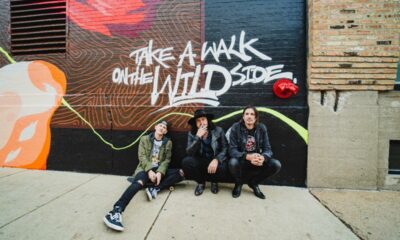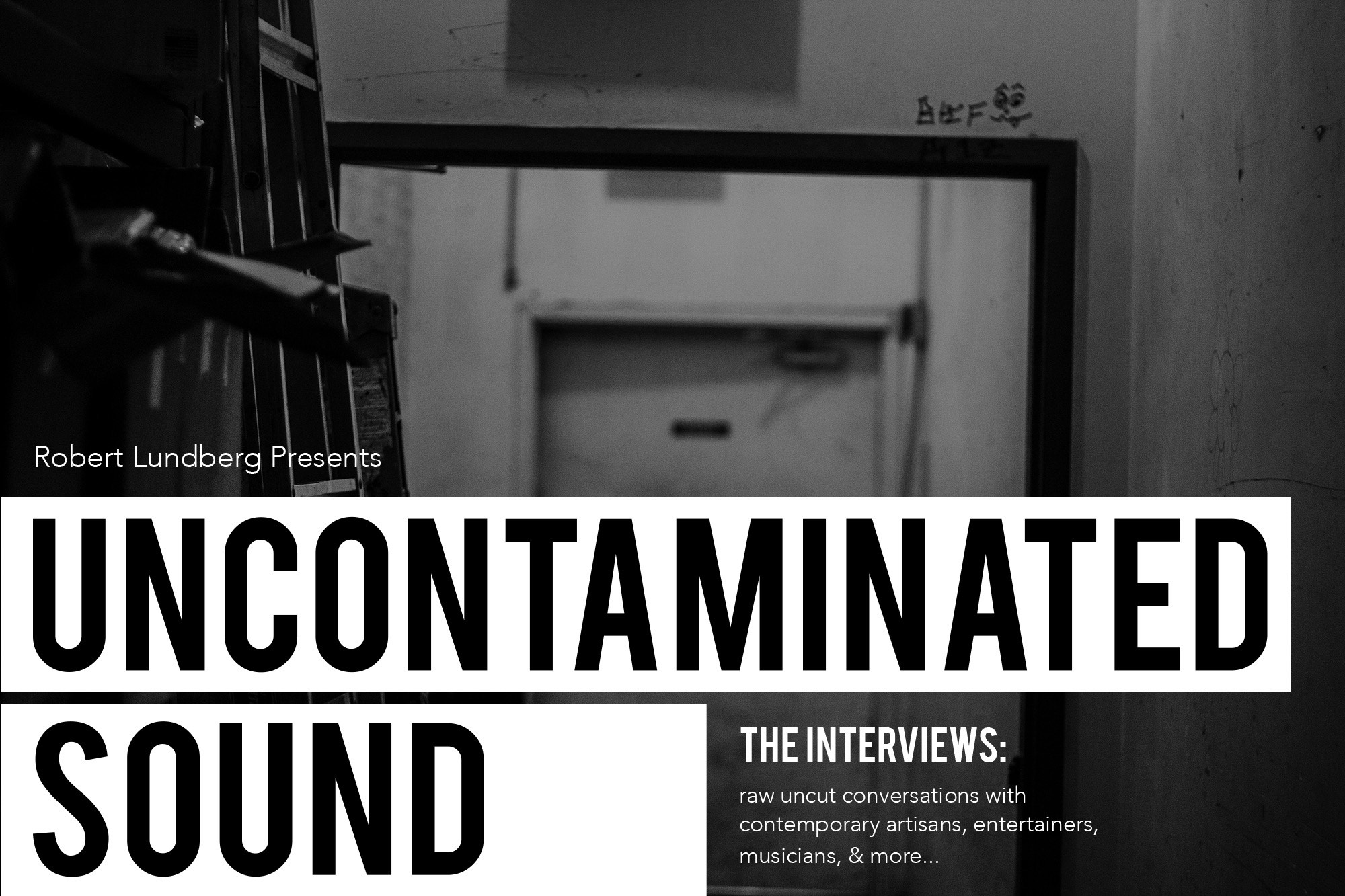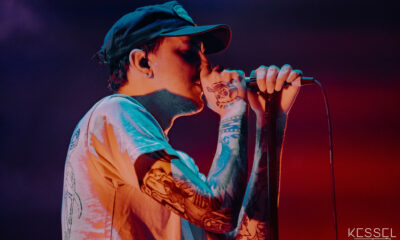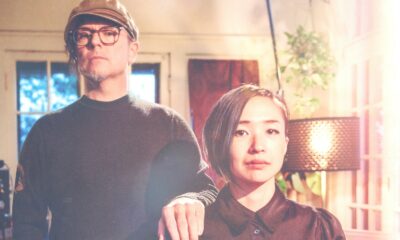Alternative/Rock
UnCovered: The Odd Haus Collective Discuss the Brilliant Cover Artwork for Oddysseys’ Single “Moaner”

There’s no such thing as taking it easy when it comes to Oddysseys. The Chicago-based band, which we have featured numerous times in the past, recently dropped their brand new single “Moaner” at the end of February, their first new release since “Body Heat,” which came out at the end of last summer. Simply put, “Moaner” is post-punk at its finest. We’re not exaggerating when we say that this song matches up pretty well with anything released by the innovators of the movement of the late 1970s.
Speaking of movements, Oddysseys have become so much more than just a band. They exist now as part of The Odd Haus Collective, a collaborative effort formed in 2019, originally motivated by the drive and determination of Oddysseys. Odd Haus is a conglomeration of artists, musicians, and individuals in the industry who join together to create consistent, brand-driven content. From engineers, producers, mixers, promoters, artists, merchandise designers, or video producers, they all exist under the vast umbrella of this cutting-edge collective. Odd Haus now exists beyond the borders of Oddysseys as a band, and are there to lend a helping hand to artists just starting out, or those who don’t know where to begin.
Two integral members of The Odd Haus Collective are two masterfully talented visual artists named Anna Schwartz and Elle McGonagle. The two collaborated together to create the artwork for Oddysseys’ latest single “Moaner.” For our latest edition of UnCovered, we spoke at length with both Schwartz and McGonagle to discuss the creative process, their relationship with Oddysseys, their intentions for the artwork, and the importance of memorable cover art.
What was the inspiration for the song’s cover artwork?
Annie Schwartz: “We want to show the duality of emotion in this song, as well as the punk direction Odd is becoming. The song is all about extremes, how you can be harsh, critical, and urgent with yourself and also soft, gentle, and understanding. We’re all just trying to like ourselves a little more, cut through the noise. What does the noise look like? That’s what Elle and I were solving, that sort of critical unease.”
Elle McGonagle: “We started by looking back on handmade punk gig posters and zines. The goal was to capture the frustration embedded in the lyrics and instrumental energy. The art style evolves along with the band’s sound, and it’s our job to develop the imagery that follows the progress towards their new direction. We used cut-up and torn pieces of paper, paint, and photos that imply scattered thoughts, incomplete memories, and action taken by passionate outrage.”
The artwork is really impressive. Tell us about how you both met.
Schwartz: “When we were at Syracuse, Ellie and I became close in our first-year studio courses. We came from similar working-class, hardy New England backgrounds, and it helped us survive that first year. Later we found out we were on the same fall campus tour, our dads having hit it off while we both hung back, sussing everything out. I got to know Christian and the rest of Odd more over the years. We all had similar vested interests in staying up in Ellie’s room during parties, closest to her record collection.”
McGonagle: “We met on a tour of Syracuse and ended up being in the same class by chance and have been side by side ever since. I’m from Boston and she’s from deep in the mountains of New Hampshire. She can free climb a mountain faster than I can walk up two flights of stairs. She painted a portrait of me that looks more like me than actual photos somehow. We’ve collaborated on so many projects so when I started designing for Oddysseys I couldn’t think of a better person to turn to.”
Please elaborate on the medium(s) used when creating the art. We’d love to know how the artwork was created.
Schwartz: “I start every piece by hand. I love a right mess. Each cover starts as a visceral process of tearing paper, scanning magazines, hunting for the right textures and imagery. I’m sort of a magpie for old mags; National Geographic, Playboy, and a full bin of nudist colony pamphlets called Sunshine & Health I bought in a flea market two years ago. Once I have enough content and scraps, I layer these collage sketches into anywhere from two to a dozen arrangements. Next, I used charcoal, ink, and paint to make various line textures I can layer on digitally to the collages. I have commitment issues and get anxious about painting directly onto the collages but relish the mistakes that come up when layering and arranging collages.
Elle helps me master the compositions in Photoshop with her photography and art direction throughout the whole process. I see our work as landscapes for listeners to insert themselves into when they listen to them. Odd is about so much more than music, it’s a community. Our visuals are another way to show our multitudes.”
What were the partnership’s dynamics like? For example, was a specific look given, or did you have full free range?
Schwartz. “I do not start or end a new piece without first calling everyone; I have to know what they’re seeing. We don’t care if we’re halfway through dinner or at the grocery store; we pick up. I have grapheme-colour synesthesia, so it often helps for me to hear the song and have an emotional reaction before reading lyrics (which immediately brings up colours for me). We all have this attraction to shades of vermillion, so it’s definitely taken over in our work. To show the multitudes of emotion in ‘Moaner,’ I think it was more critical for it to be black and white. Regarding dynamics, I joke that Elle has been art directing me since college, but it couldn’t be truer. I don’t trust anyone else’s eye more.”
McGonagle: “I listen to the song and read the lyrics, and write down what thoughts or feelings come through with the addition of what they want to convey. Annie and I have known each other going on what… going on seven years now? We met on a tour of Syracuse and happened to be placed in the same drawing class together. She blew everyone else’s work out of the water. She continued to, and still does, whether she lets herself believe it or not. I always remind her of that, and love to work alongside her no matter what the project is. We used to help each other with projects in college, and continued being friends up to this day. Getting to work on album art has always been a dream of mine since I got introduced to the Boston music scene when I was 13, so getting to work with my best friend on designs for the music industry couldn’t make me happier.”
Would you consider yourselves additional band members, or someone contracted for just this piece?
Schwartz. “I’m stuck with them like glue. We’ve navigated so much of life; triumph, heartbreak, loss, and the mess of making meaning of the world. Our work is just one of the many threads holding us all together.”
McGonagle: “I’m attached at the hip to everyone in the Odd Haus. I do their art with Annie, strategy with the boys, A&R for the group, and anything in between. I’ll be there with the Odd boys when they’re playing a show, shooting videos on VHS, air drumming and yelling the lyrics to some random ass song, when they’re playing Tony Hawk Pro Skater 3 before practice, and whatever nonsense they get themselves into. I’ll be there for Annie no matter what, ride or die, and I know she feels the same.”
Did you hear the song beforehand? Or, what kind of input were you given?
Schwartz: “Christian shares whatever he’s working on, any audio sketches he might have, or drafts before something new is mastered. He really has a strong sense of visual language and we talk out what we’re seeing for a cover before Elle and I get to our process.”
McGonagle: “I hear the song from early demo, to bounce, to final mix and mastering. I get to hear the song evolve and grow and reach the quality that’s desired. They let me give my input on mixes but really I leave the music to them and hustle to help plan the rollout strategy and see whatever I can do on my end.”
Have you ever purchased an album solely because of its album artwork? If yes, did the music live up to the artwork?
Schwartz: “Yes and yes. I’m a big believer in the power of great album art, when you see people flipping through records they always say ‘look at this’ when pulling out a record. We relate to music just as much visually as we do audibly. Sharon Van Etten’s Are We There is a recent one for me. I know that head out the window feeling, and I had to know how she heard it too.”
McGonagle: “When looking for new music, looking at the cover art has a big influence on what I decide to click play on. I know you’re not supposed to judge a book by its cover, but some artists that go the extra mile with visuals suggest to me that they care about their brand image. There’s a lot of art I like and lokey hate the music, but still respect the visuals.”
With the increasing popularity of digital music, most fans view artwork as just pixels on a screen. Why did you feel artwork is important?
Schwartz: “I love this question. Album artwork is always an opportunity to reach people and communicate with them. Our world is so segmented, and good visual art is not as available, or valued, by the masses as it used to be. If you ask someone on the street what their favourite song is, everyone will have an answer. Their favourite artist? Not always as quick of a response. Music is another way we can bring art to people, break down barriers and build up access to visual language.”
McGonagle: “Artwork is what they see and associate with the songs they listen to the most. Good artwork stands out and suggests that the artist really cares about their brand which makes me respect them more and hopeful that they’ll continue to release more good music. All too often the creators of that artwork associated with an album or song rarely gets recognition for their huge contribution to what listeners link to their favourite tracks…”
When people look at the cover artwork, what do you want them to see/think?
Schwartz: “Honestly I wanted them to feel a bit uncomfortable. The internal questioning, turmoil, and resolution in ‘Moaner’ is not an easy process, and we wanted to show that in the work. Besides, we grow most when we’re pushed out of what’s familiar. There’s a lot going on in this cover, and in our heads.”
McGonagle: “I want them to see fragmentation and frustration, think of torn posters they may pass by on poles or buildings that show that someone was there, something was being brought to attention, but only a remnant of it remains now. I want them to listen to the music, look at the art, scan it while finding things they didn’t notice the first time around, which mirrors the act of focusing on each instrument, sound, and lyric individually. I believe doing this helps expand the listener’s understanding of the song and connection to it.”
Have any favourite music-related visual artists?
Schwartz: “Definitely Bill Viola. The way he processes sound and manifests the fundamental nature of humanity blows my mind. I had the incredible opportunity to see his show at Palazzo Strozzi in Florence in 2017 and it changed my approach to making art. Aaron Anderson and Eric Timothy Carlson are also huge inspirations. Their work for Bon Iver is an endless well of learning and awe for me. They had me reading books on numerology and symbols for a year after 22, A Million was released.”
McGonagle: “Bráulio Amado is one of my favourite designers and he’s done album art for some Frank Ocean singles. He’s got a completely unique style that’s unmatched. Dewey Saunders is a handmade collage legend who’s worked with multiple artists like Anderson Paak and Future. Allen Chiu graduated from my Communication Design program at Syracuse and he did Dominic Fike’s first EP which is one of my favourite albums.”
What are your thoughts and/or the pros and cons about digital art versus non-digital?
Schwartz: “Nothing is going to beat holding a record for me, but, the opportunities in digital art excite me. We always innovate and adapt, and I find there’s a lot to embrace within the tension between the physical and digital world. There’s certain gravity to holding a physical piece, or record, and a particular void to digital work. When you give someone a record, they feel it, hold it, conscript their friends to help them move it throughout their life in numerous U-Hauls and miles. Where is that physical connection in digital streaming? How we cross this void is up to our generation to make music and art more accessible.”
McGonagle: “I collect vinyl from modern artists and it really changes the way you interact with their work. It’s tangible, it shows even more artwork, you can hold their work in your hands which helps develop a closer bond to the artist. It implores you to listen in the order they intended, which is less common now in an age of streaming. I collect limited edition collared vinyl which means more effort into art direction went into the record, and means I own one out of only a few presses available to fans so that’s sick. Can’t knock streaming still… It’s how I discover new artists and have the ability to listen to songs anywhere and immediately play music as my environment or mood changes.”
What do you think are some of the cover artworks that have translated best/worst onto t-shirts and other merch?
Schwartz: “No one will ever forget Joy Division after Unknown Pleasures. The t-shirt is the best billboard we’ve seen yet, and I’m an absolute sucker for a good band shirt. I think the fact that vintage rock band shirts are so popular now is intriguing, often given solely on the visual appeal of the band that causes people to identify with them (regardless of whether or not they’ve listened to said band’s music). We have such a relationship with the visual elements of our favourite bands, and it should be deeply considered. For Odd, hands down, With You would make a great shirt. Christian!”
McGonagle: “You’ll never not see a Joy Division or Nirvana shirt hanging on a wall at Urban Outfitters… So I can’t help but shout out Wu-Tang Clan. Their symbol has solidified itself in the music world and represents such a revolutionary group of artists that took samples to a whole other level. I love their albums and own the VHS they took the soundbites and their names from.”
Do you prefer having the most creative control when you get a project, or do you prefer when the band gives you a lot of input?
Schwartz: “I work best with the band, I trust them to tell me what they’re seeing and feeling and that it comes from an honest place. We’re making our own way, so that means a lot of conversation. We process themes and intentions first before I go and work on my own, and then rinse and repeat until the work is where we want it.”
McGonagle: “I talk to the boys, ask what they feel when they play it. I listen to the song over and over then read the lyrics translating the abstract visuals in my head until they start to manifest more clearly. I show them my progress only up to the point when Christian stares over my shoulder and always asks ‘That’s cool but… what would it look like…. Inverted’ or some shit like that. At that point, I turn directly to Annie and get to work.”
Was the art for “Moaner” influenced by any of the themes explored on other songs?
Schwartz: “Absolutely. We as individuals and a band are navigating this internal becoming, of learning yourself. It’s a messy and beautiful process, so we needed to show that.”
McGonagle: “In their own words: ‘We wanted to develop a project that conveyed the reasons why we wanted to scream pretty much every day this past year. Like many of the people in this country (though not nearly enough of them), we’re fed up with the amount of social and racial injustice that we see every single day, the lack of dialogue and blatant disregard of growing global turmoil, and the lack of optimism and progress.’ So that anger, frustration, and feelings of division were taken and interpreted with visual elements.”
How do you think the art will affect the listener’s perception of the song?
Schwartz: “I hope they’ll feel less alone. The cover is a worrying sort of chaos, but there’s order to be found, just like in us.”
McGonagle: It should expand their perception of what messages are being delivered. I firmly believe the challenge of conveying the emotions and mood of a song into visuals is an essential process that isn’t easy, but a cover that conveys the song’s intent can lead the listener to develop a deeper understanding and connection.”
Is the art for “Moaner” related to any of your previous album cover artwork?
Schwartz: “Yes. We work with a variety of mediums, and ‘Moaner’ is a continuation of the collage we’ve done in the past, just expanded. We’re showing our chaos a little more now.”
McGonagle: “The past singles have all been collaborative collages between Annie and me, as well as the painting created for the first full album. Their sound is evolving and progressing, and we’re right alongside the band delivering artwork that grows with them.”
When it came time to come up with artwork, was there a lot of guidance given or was this just a natural brainstorm?
Schwartz: “We all worked together throughout the creation of the cover. I share most of my initial drafts, sketches, and textures throughout the process. I love what the rest of the band sees during the process, it helps me pull myself out of my work and back into it.”
McGonagle: “Annie and I will start by listening to the track independently. We both have the ability to listen to music and see visuals. We both write down lyrics or words that stick out or evoke emotions, memories, colours, and images. From colours to shapes, patterns, or glimpses of pictures and scenery. Then we come together and compare notes to see what overlaps or concepts that the other didn’t see. We ask the boys what they wanted to convey and work that into our process. It’s a collaborative process that ultimately results in distinct, unique artwork that captures the entire essence of the song.”
What’s your favourite thing about this cover art?
Schwartz: “The text. I used my left hand to write part of the lyrics from ‘Moaner’ and layered it into the collage. Our handwriting is such a stamp of the self, so I love to incorporate it into as much work as possible in new ways.”
McGonagle: “We live in a digital age. Even though almost any texture or picture or element is a click away, and amazing artwork is created because of that. I feel like the act of including tangible media, designs have that extra feature that helps them stand apart. The depth and textures that come from Annie’s handmade elements can’t be achieved on a computer alone no matter how many layers you add in photoshop. She’s the best fine artist I’ve ever met and we’re more than lucky to have her.”
Did you work on any artwork besides the cover?
Schwartz: “My work crops up over social media for Odd, and in the zines that Elle produces. There’s more on the way for sure, and I’m always posting process pictures on Instagram.”
McGonagle: “They put everything into their music. They also conceptualize, direct, shoot, edit, and produce full music videos or social promotion. Their dedication to putting the DO in DIY is constantly impressive as they continue to outdo themselves and raise the bar.”
Do you have a favourite album cover of all-time?
Schwartz: “A Million. You might’ve guessed. This is a rough question because there are simply so many. Close runners for me are Stranger in the Alps from our girl Phoebe Bridgers, Are We There by Sharon Van Etten, and Bon Voyage from Melody’s Echo Chamber. Oh, and Downhearted by Molly Burch.”
McGonagle: “Yikes how the hell do I answer this… My favourite artists are the Arctic Monkeys followed by The Weeknd. AM is so simple, and House of Balloons is definitely one of my favourites. I love Dominic Fike who came out the cut an absolute rockstar in a genre of his own. I had the opportunity to meet him and get my vinyl signed, which has an incredible cover designed by Allen Chiu, who graduated the year before me from Syracuse Communications Design.
Far too often visual artists fly under the radar despite creating album art that could be seen millions of times every time it’s played. I think it’s so important to acknowledge the huge impact that creatives make behind the scenes, and celebrate their contributions to the music industry.”
-

 Music2 weeks ago
Music2 weeks agoTake That (w/ Olly Murs) Kick Off Four-Night Leeds Stint with Hit-Laden Spectacular [Photos]
-

 Alternative/Rock5 days ago
Alternative/Rock5 days agoThe V13 Fix #011 w/ Microwave, Full Of Hell, Cold Years and more
-

 Alternative/Rock2 weeks ago
Alternative/Rock2 weeks agoThe V13 Fix #010 w/ High on Fire, NOFX, My Dying Bride and more
-

 Features1 week ago
Features1 week agoTour Diary: Gen & The Degenerates Party Their Way Across America
-
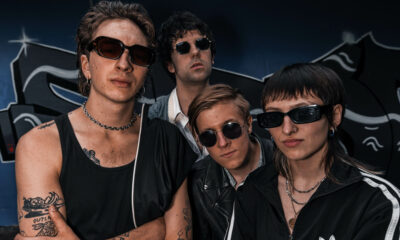
 Indie5 days ago
Indie5 days agoDeadset Premiere Music Video for Addiction-Inspired “Heavy Eyes” Single
-

 Music2 weeks ago
Music2 weeks agoReclusive Producer Stumbleine Premieres Beat-Driven New Single “Cinderhaze”
-
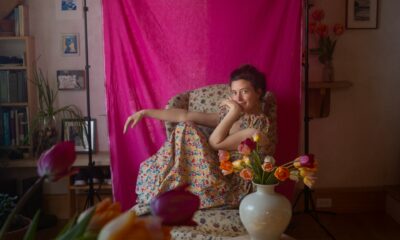
 Folk6 days ago
Folk6 days agoKatherine Perkins Strikes the Right Tone with Her “Hold On” Music Video Premiere
-

 Country1 week ago
Country1 week agoBrooke Ashton Chats About Her “Someone” Single, Creative Process, and More!


